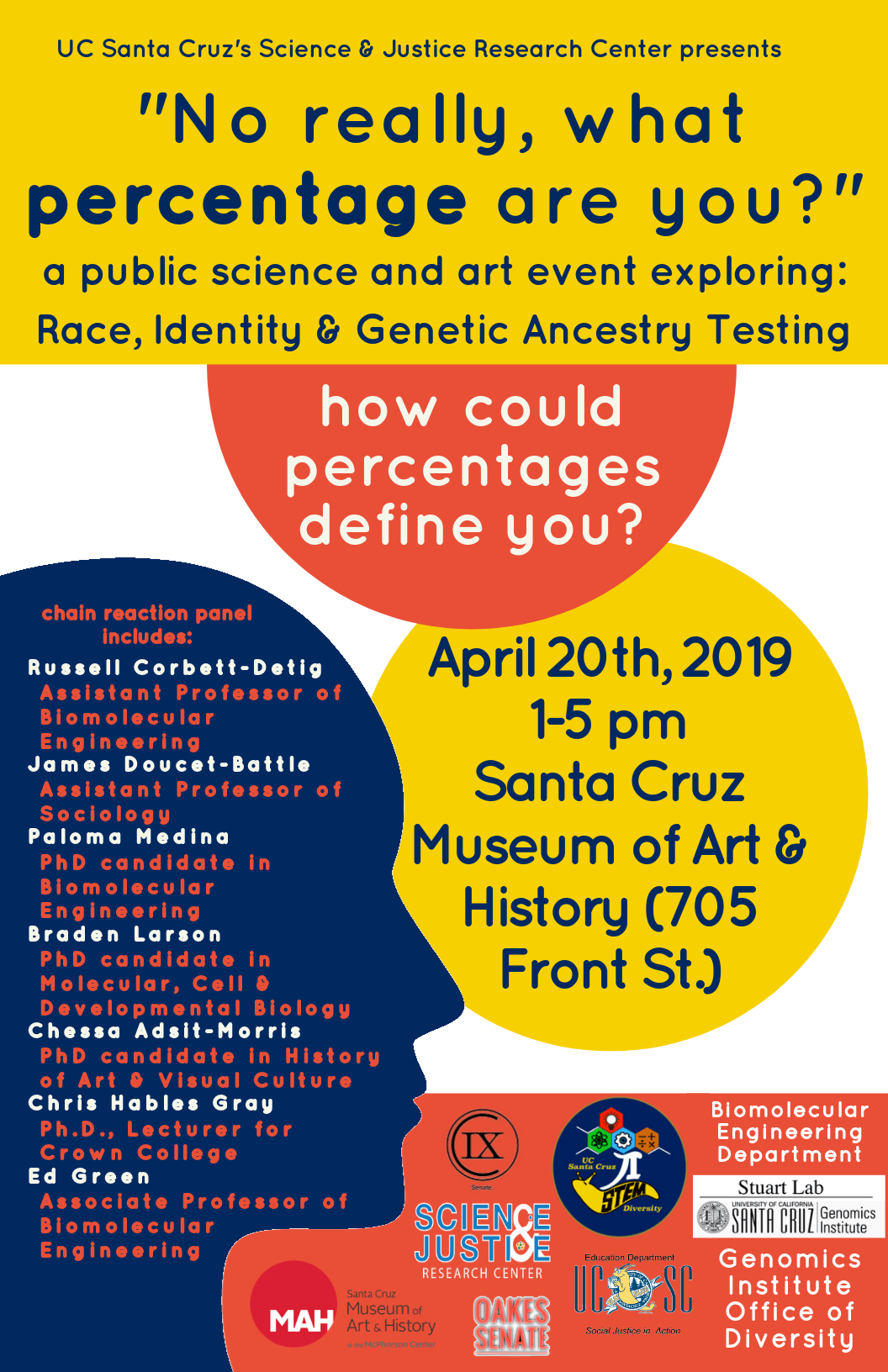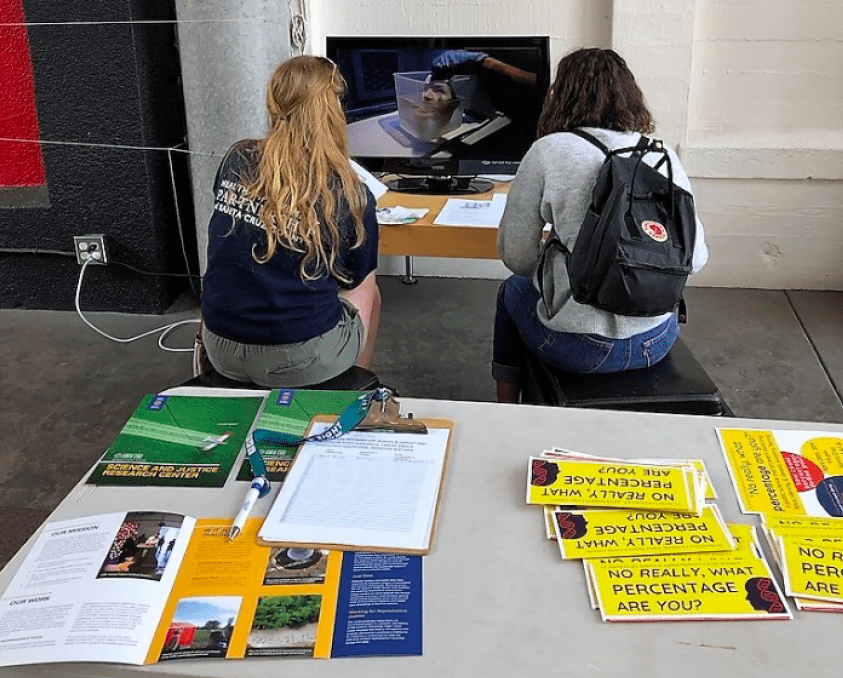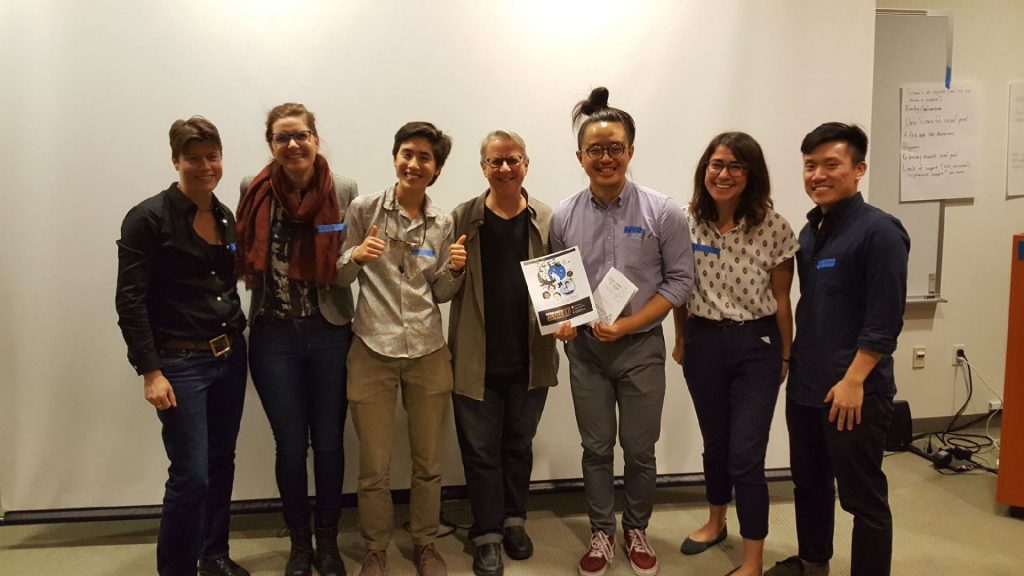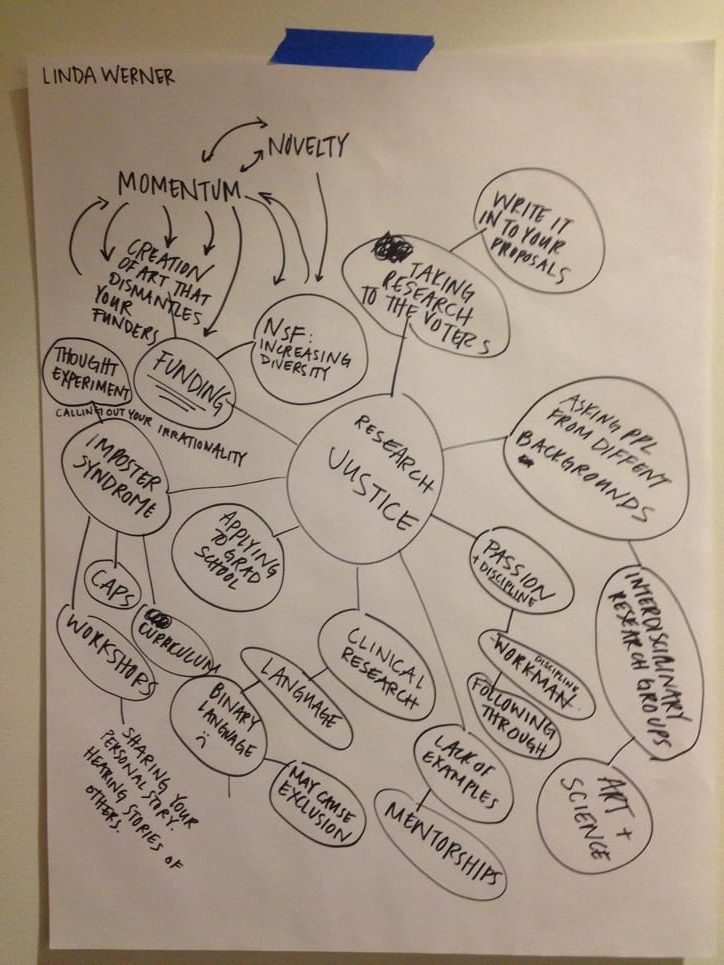The Futures of Critical Food Studies
Friday, May 10, 2019
12:00-5:00pm
Namaste Lounge
“The Futures of Critical Food Studies” is a collaborative event organized by graduate students Erica Zurawski and Halie Kampman with the support of the UCSC Science & Justice Research Center’s Training Program, the Association for the Study of Food and Society, and College’s 9 and 10. The event will bring together scholars in critical food studies to share conversations on the past, present, and futures of the field with hopes to create a space to share, collaborate, and discuss the field of critical food studies through important questions that persist as anxieties in the field.
The event will focus on thinking through questions such as: What is critical food studies? Where has critical food studies been and where is it going? What is critical about critical food studies? What are some of critical food studies current anxieties and how do we attend to these anxieties? What does it mean to do critical food studies in our current political climate? How do we practice interdisciplinarity through thoughtful engagement? How do we envision the field of critical food studies moving forward?
These questions build on already existing conversations about the futures of critical food studies while also deepening the provocations to explore possibilities for the practice of interdisciplinarity. As one of the most innovative and internationally recognized universities for critical food studies, this event seeks to build on UCSC’s unique history in the field.
Keynote Conversant
Ashanté M. Reese Assistant Professor of Sociology & Anthropology at Spelman College
Panel Participants
Alison Hope Alkon, Associate Professor of Sociology, University of the Pacific
Charlotte Biltekoff, Associate Professor of American Studies and Food Science and Technology, UC Davis
Melissa Caldwell, Professor of Anthropology, UC Santa Cruz
Madeleine Fairbarin, Assistant Professor of Environmental Studies, UC Santa Cruz
Rafi Grosglik, Visiting Assistant Professor in the Department of Sociology at the University of California, Davis
Julie Guthman, Professor, Division of Social Sciences, UC Santa Cruz
Elizabeth Hoover, Manning Assistant Professor of American Studies at Brown University
Savannah Shange, Assistant Professor of Anthropology, UC Santa Cruz
Panel Moderators
Chris Lang, Ph.D. Student in Environmental Studies at the University of California Santa
Cruz
Allyson Makuch, Ph.D. Student in Environmental Studies at the University of California
Santa Cruz
Emily Reisman, Ph.D. Candidate in Environmental Studies at the University of California
Santa Cruz
Erica Zurawski, Ph.D. Student in Sociology at the University of California Santa Cruz
Critical Listeners
Arden Rosenthal, undergraduate
Manaiya Scott, undergraduate
Gabriela Mateo-Saja, undergraduate
Co-Sponsors
The Association for the Study of Food and Society, UC Santa Cruz Science & Justice Research Center, College’s 9 and 10, the departments of Environmental Studies, Sociology, and the Community Studies Program.
“The futures of critical food studies” Event Report
By Halie Kampman and Erica Zurawski
Attendees included scholars in the field, graduate and undergraduate students, faculty and staff members, and community members
Overview
This event brought together scholars in critical food studies to share conversations on the past, present, and futures of the field, creating a space to share, collaborate, and discuss the field of critical food studies. The event focused on thinking through questions such as: What is critical food studies? Where has critical food studies been and where is it going? What is critical about critical food studies? What are some of critical food studies’ current anxieties and how do we attend to these anxieties? What does it mean to do critical food studies in our current political climate? How do we practice interdisciplinarity through thoughtful engagement? How do we envision the field of critical food studies moving forward?
These questions build on already existing conversations about the futures of critical food studies while also deepening the provocations to explore possibilities for the practice of interdisciplinarity. As one of the most innovative and internationally recognized universities for critical food studies, this event built on UC Santa Cruz’s unique history in the field.
Key discussions and learnings from panels:
Panel 1
Panel one began with a discussion of how the study of food is not new in the academy. It has existed in different spaces, with links political ecology and anthropology. Panelists agreed that critical food studies is an engaging field because it is an interdisciplinary space which uses food to frame a variety of issues. Food studies has served as a lens to look at broader issues including power, knowledge politics, states and citizens, social cultures, and diasporas.
When asked about the institutional histories of food studies, Julie Guthman kicked off the discussion by emphasizing how the contemporary field of critical food studies was the result of critical and introspective thought, much of which was coordinated through UCSC-led workshops, events, conferences, despite what she described as minimal institutional recognition. Melissa Caldwell spoke to her experience as the former editor of Gastronomica, noting that the journal was rebranded to include conversations on the “ugly side of food” (i.e. away from glossy print celebrations of delicious food) and towards spaces where scholars and activists interact. Charlotte Biltekoff, as the only panelist not from UCSC added that food studies at UCD raises interesting questions about the boundaries of food studies, and the degree to which it may work with or alongside fields including science and technology, biotechnology, and biology.
Panelists were asked to define and reflect on some of the current unaddressed anxieties in food studies. Madeleine Fairbairn emphasized challenges of interdisciplinarity and pointed towards the benefits of work across parallel fields, like critical agrarian studies. Guthman commented that she has seen the field change from being dominated largely by white scholars, to become more racially diverse. Changes in student demographics, interests and activism have shaped the face of the field. Guthman added that any anxieties that she feels about her place in food studies, or in the parallel field of food justice, are welcome in the sense that they indicate that more space is being claimed by people of color. In light of this, she articulated the motivation to use her privilege to make changes at institutional levels.
Panel 2
The second panel began with a conversation on participants’ current projects, and quickly got into conversations about coloniality and decolonization. Elizabeth Hoover introduced a move away from a rhetoric of “decolonization,” recognizing the impossibility of actually deconstructing institutions that are colonial in every way. She offered, instead, to thinking about “indigenizing,” moving forward in a creative way while holding onto indigenous practices. In this move, Hoover thinks about moving forward and less about looking back.
Panelists were also asked to think about accessibility, with the question, “how can critical food studies become more accessible?” Alison Alkon and Rafi Grosglik both mentioned their upcoming work on food and media, both acknowledging the ability for social media and technology to disseminate conversations in critical food studies, but also acknowledging the difficulty in being a more public facing scholar. Elizabeth Hoover added that while fears of trolling and threats on social media do exist, there is also a lot of potential around utilizing these venues to invite people to the conversation. She asked, “What is the purpose of the venues by which we reach people?” Hoover gave blogs as an example, as a way to invite indigenous communities to the conversation and feature the power of photography. This certainly was a big point of convergence in this panel, thinking about accessibility, media and community. This could be a thread to continue in the future.
Finally, this panel built on the previous panel’s conversation around scholar-activism. Alison Alkon recognized that critical food studies has a better-than-average rate of people bridging the scholar/activist divide. For her, to occupy this role is to draw questions from the community, elevate voices, and listen to the narratives that run through. All panelists seem to acknowledge that the “scholar/activism” divide and role is constantly renegotiated. At the same time, this panel began a broader discussion on tempo, by noting that activism moves must faster than academia. Alison Akon notes that deliberateness is tied into questions of “slowness,” that while academia is slow, we do need to recognize that in order to move forward deliberately, we need to slow down. Elizabeth Hoover builds on this discussion through her work on “rematriating” seeds, highlighting womens’ role around connecting seeds back to the land and the slowness with which it takes to develop these relationships.
Key discussions and learnings from keynote:
The keynote address was formatted as a conversation between Ashanté Reese and Savannah Shange, focusing on Reese’s new book Black Food Geographies (UNC Press 2019). At the request of Reese, this format created a conversational atmosphere and gave due credit to the importance of collaboration, co-labor and co-scholarship.
Reese began by acknowledging how she has been influenced by Zora Neale Hurston, who inspired her to be an anthropologist and who she admires for her embodiment of a black sense of place. The ethic of care that Hurston showed in her work serves as an example for Reese, and appropriately, the theme of care permeated the discussion and indeed even the planning of the event and prior conversations with Reese about the event.
Shange asked Reese what kinds of connections she sees between freedom and food studies, to which Reese responded that black liberation was at the center of her work. Shange followed with a question on the links between gentrification, displacement and race, asking how ethical migration may be practiced in the wake of slavery. Reese responded by emphasizing the importance of place to black indigeneity. She explained that she does not want to see black food studies or geographies through the lens of displacement, and that there is an importance to drawing attention to the claiming of space. She articulated this with a story of a time when she was walking with an elderly woman in the Deanwood neighborhood (where she did her field work), and the woman stopped when a white speculator passed and yelled “buzzard!”
These types of themes shape and guide her book, Black Food Geographies, framed around highlighting everyday narratives of individuals working for black food justice. Reese explained how she feels that we are so focused on grand narratives of freedom, that we lose sight of the importance of the mundane or hidden forms of freedom. She explained how in black studies (or in life) one can look at moments of violence in the immediate, like a police shooting, but people tend to spend less time looking at slow everyday death. In this sense, Reese highlighted the importance of attending to grief not as an individual private emotion but as a broader constant, yet also an agent for moving forward. Methodologically, she places emphasis on the types of relationships that a researcher may forage with their interlocutors. Rather than asking for or extracting stories from her interlocutors, she encouraged them to tell her stories that they wanted to tell. In this way, she recognized the importance of refusal as a form of agency. She acknowledged the theoretical foundations of refusal in indigenous work, referring to Mohawk Interruptus by Audra Simpson.
Reese spoke not only of the kinds of relationships she aimed to build with her interlocutors, but the academic genealogy that she curated. She emphasized that academic genealogy matters, and scholars in food studies have particular agency in curating their own unique genealogy as the field is still being shaped. She encouraged scholars to take their citational politics seriously, and as a practice of reading.
Reese closed with a provocation and recommendation to scholars to be as outrageous as they want, using food as a lens to study whatever broader social phenomena they seek to understand. She advocated for more conscious citational practices – #citeblackwomen – and spoke about her desire to add authors who represent a broader diasporia than the US. There exists more work to be done in food studies, she said, particularly around themes of disability, queerness, and the (multiple) souths.
Conclusion: overarching theme throughout
There were quite a few overarching themes throughout the day-long conference. These included: the analytical power of food as a lens, the ever-changing nature of scholar-activism, a call for recognition and acknowledgment of work in the field that has always been done, a call for attention to work that is under-recognized, a call for building new kinds of relationships and new ways of experiencing the field, and finally, calling for more representation and care.
A big takeaway from this event, was the benefit of the format. In rethinking the entanglement of the pasts, presents, and futures of critical food studies, we offered a new way to think about the events around these types of conversations. Ashante Reese offered a similar disruption of the sanitized panel-keynote event format by asking, “what does it mean to be an expert?” and “how does one be a keynote?” In these questions and in the format of the event, I think we were able to see a different way of relating to each other and how to be in conversation with each other. In various conversations with participants after the event, many acknowledged how powerful the conversations were and how fruitful they were for a variety of reasons: for upcoming writing projects, for thinking through the field, for engaging in new ways.
More information can be found at: https://futuresofcriticalfoodstudies.sites.ucsc.edu/








